PRECALC UNIT 11
1/33
There's no tags or description
Looks like no tags are added yet.
Name | Mastery | Learn | Test | Matching | Spaced |
|---|
No study sessions yet.
34 Terms
Derivative with add/minus
f′(x)
Derivative with multiply
f′(x)=f'g+fg'
Derivative with division
f′(x)=(f'g-fg')/g²
Derivative with e
f′(x)=ex
Derivative with ln
f′(x)=#/x
Ex:(3/x)
Derivative with logs
f′(x)=1/(x ln (log number))
Ex:(log₂ x -> 1/x ln 2)
sinx
cosx
cosx
-sinx
tanx
-sec2x
cscx
(-cscx)(cotx)
secx
(secx)(tanx)
cotx
-csc2x
Slope of secant line
(f(x₂)-f(x₁))/x₂-x₁
Slope of tangent line
lim(h->0)=(f(x+h)+f(x)/h)
Radical derivative
normal, except IF NEGATIVE CHANGE LEVEL
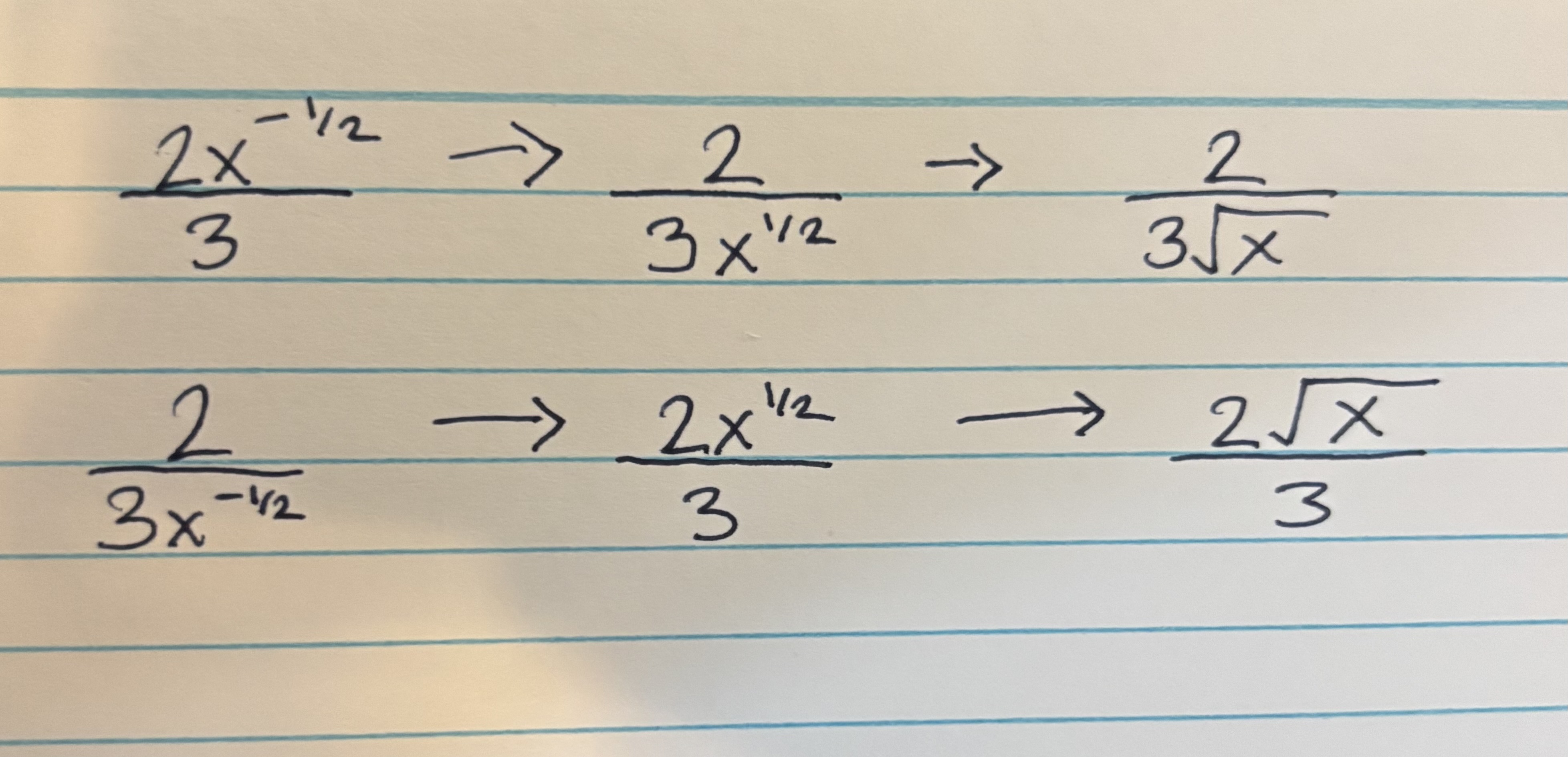
Derivative with exponentials
f′(x)=#x ln #
Ex:(3x ln 3)
Equation of a tangent line (given x=#)
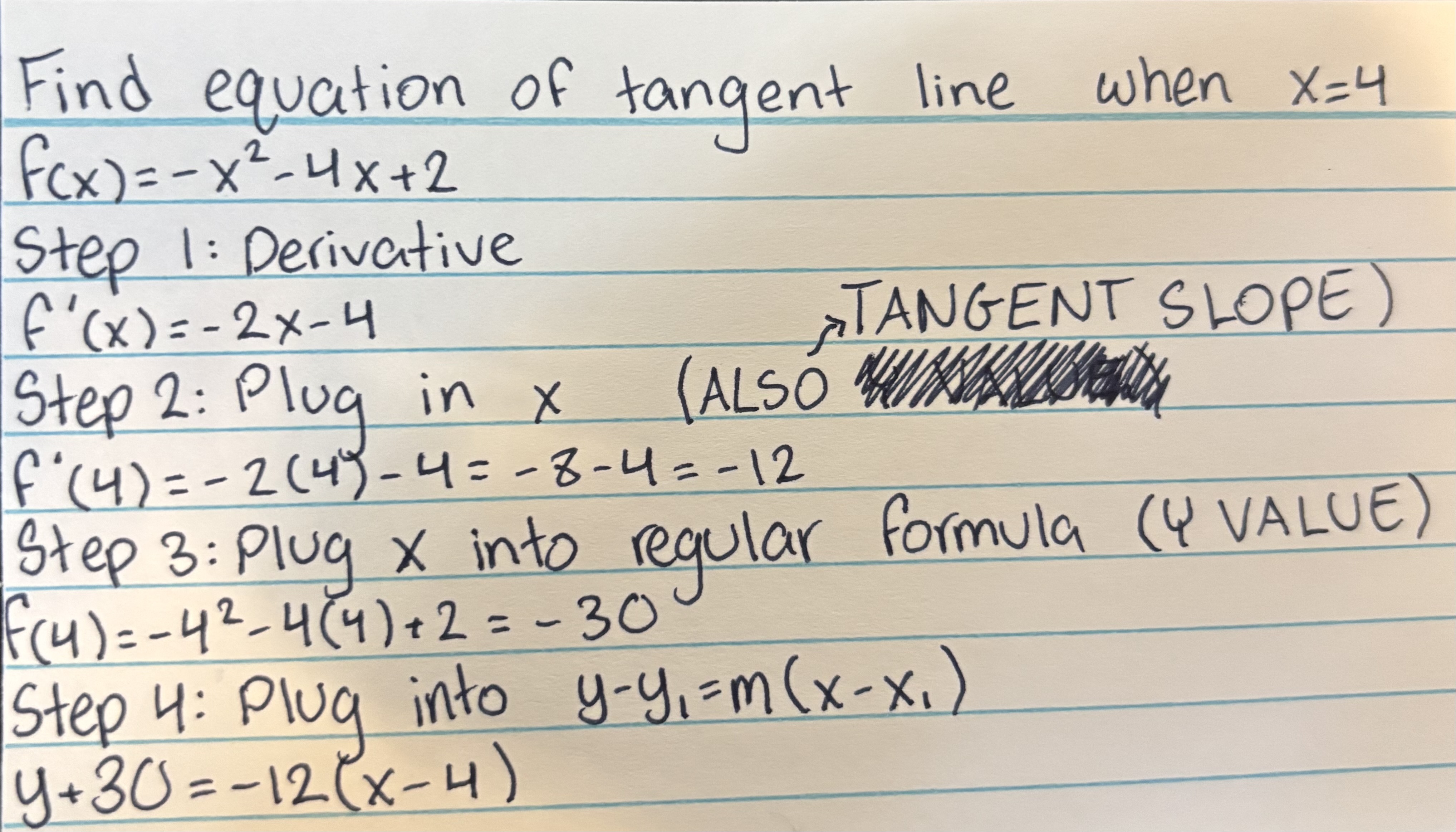
Points of a tangent line given slope
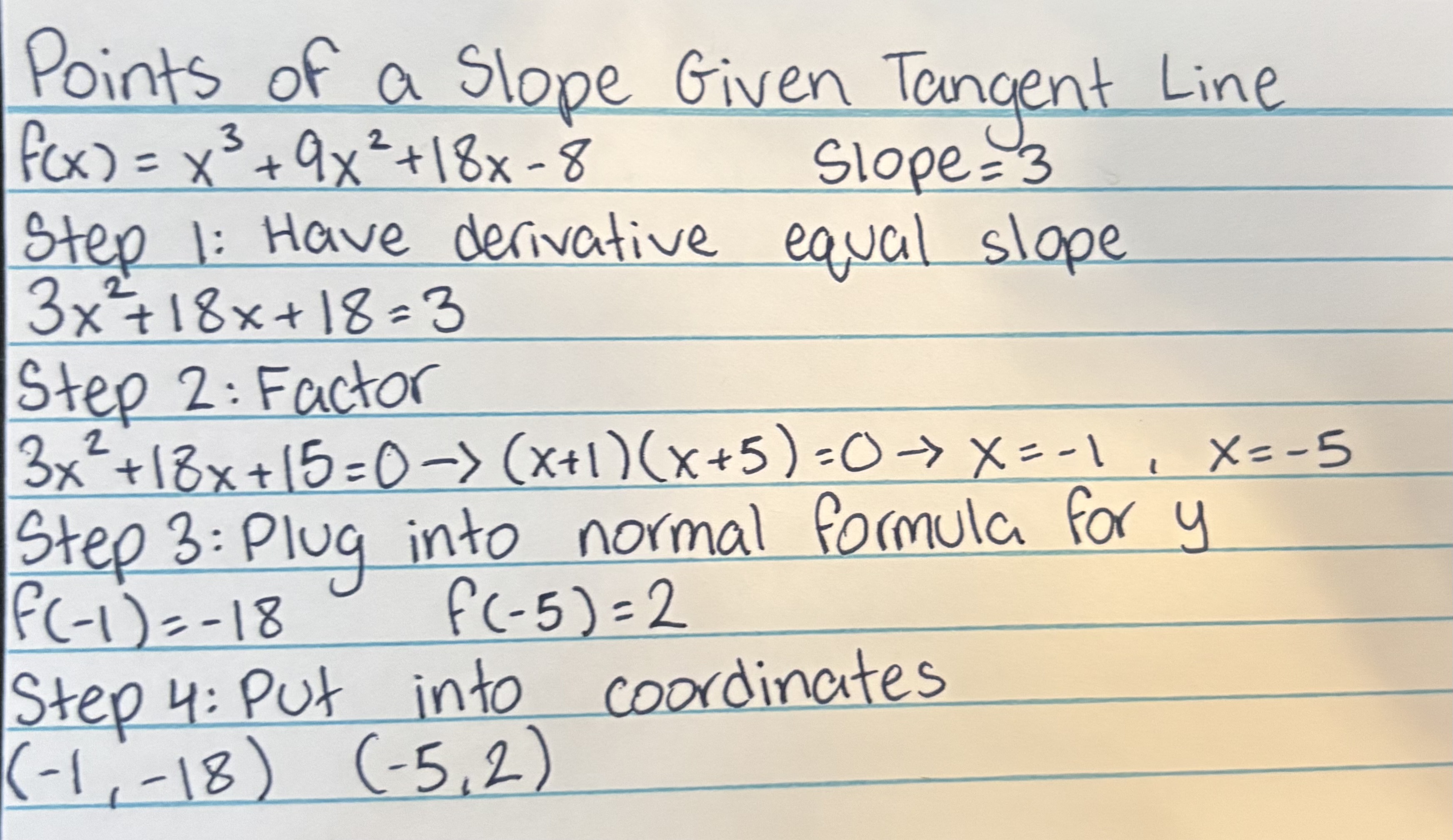
Chain Rule
f′(x)=(g(x)) · g′(x)
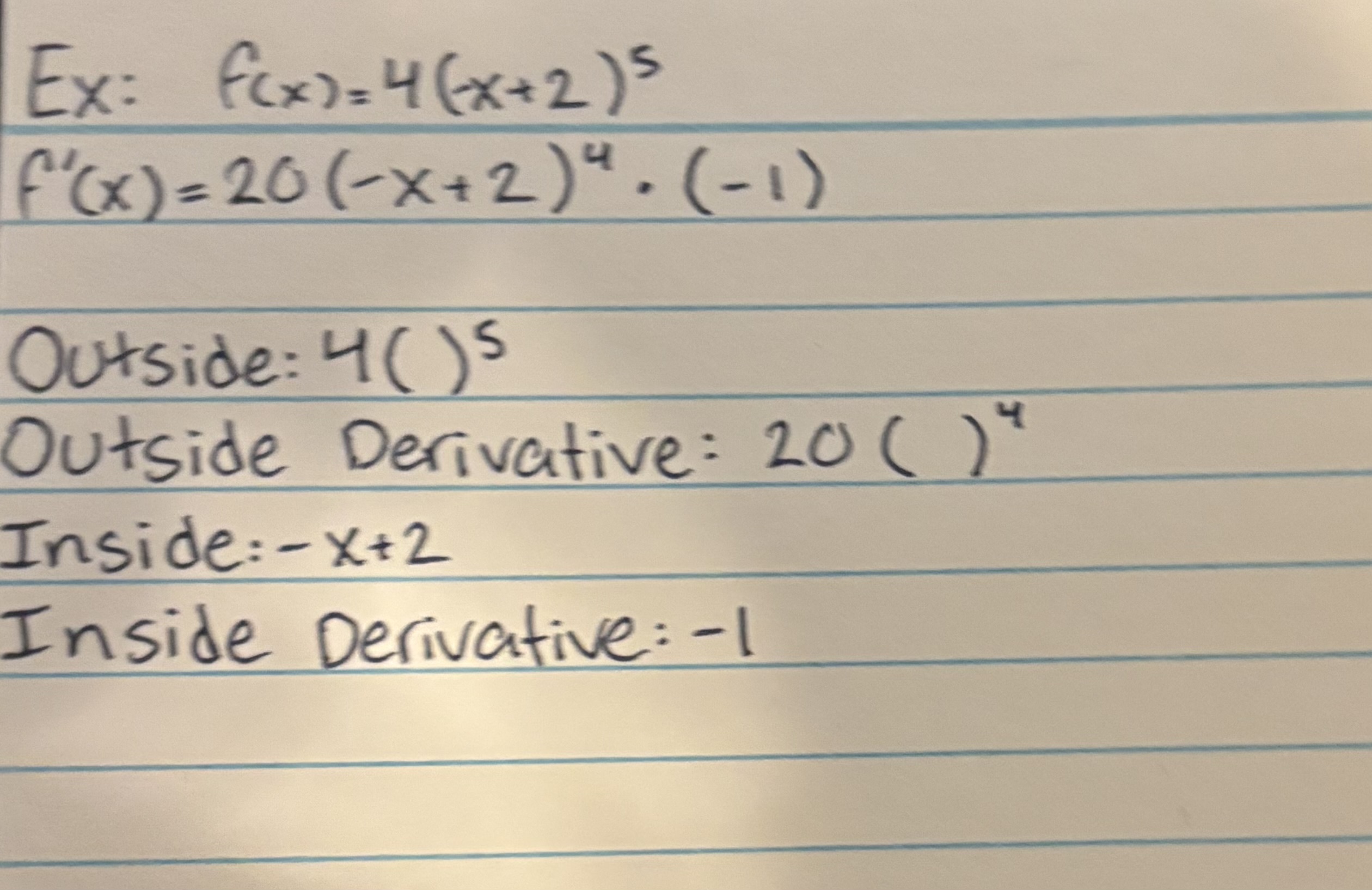
When the Trig Derivative has exponential
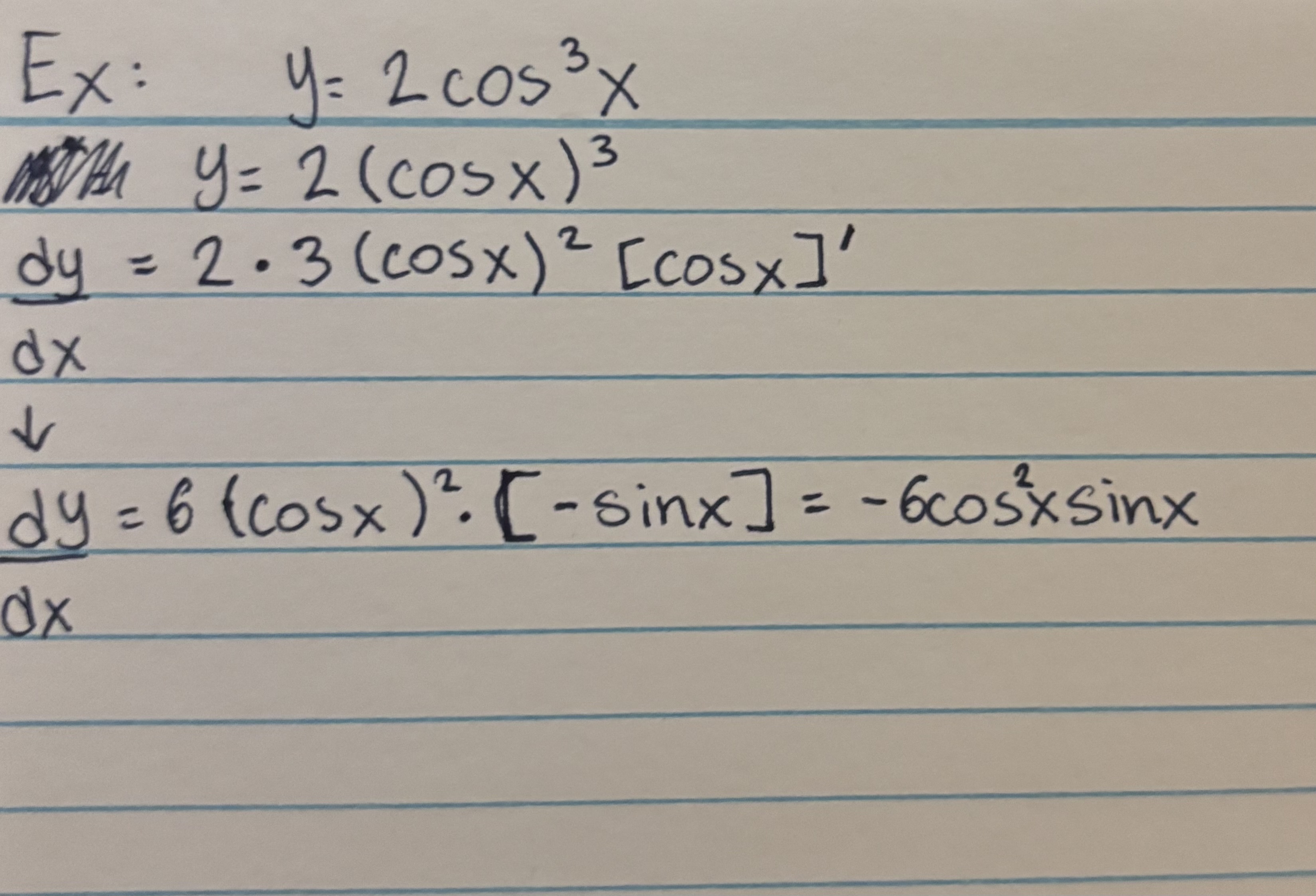
When the Trig Derivative does NOT equal just x
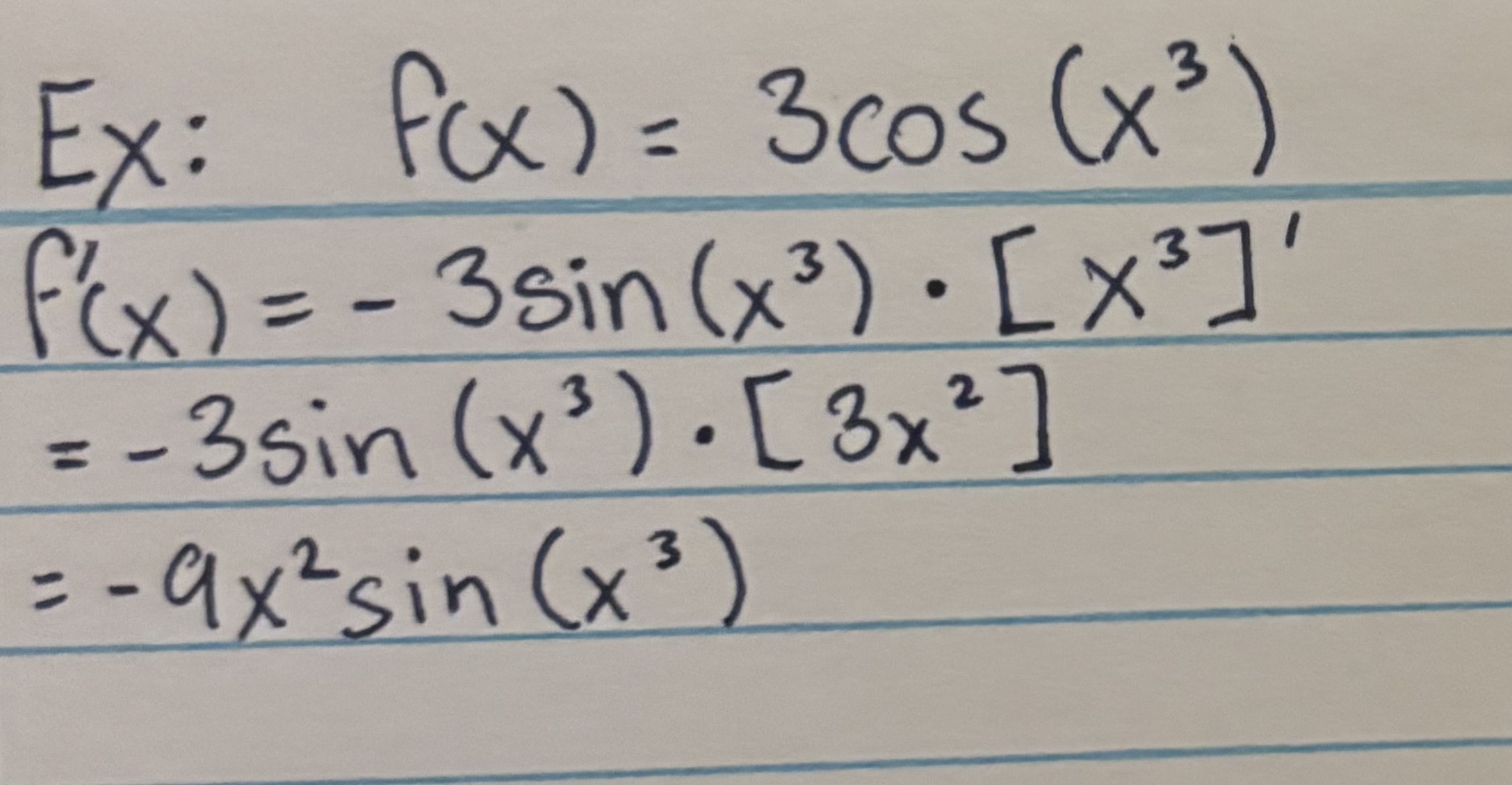
Derivative of e (Chain Rule)
f′(x)=exxx· (Derivative of xxx)

Derivative of exponential with base NOT e (Chain Rule)
f′(x)=#xxx·ln#·(Derivative of xxx)

Derivative of ln (Chain Rule)
f′(x)=(1/x)·(Derivative of #)

Derivative of log (Chain Rule)
f′(x)=(1/x·ln(log#))·(Derivative of x)

Implicit Differation: Solving for dy/dx
Differentiate like normal, but make all differentiated y values multiply by dy/dx
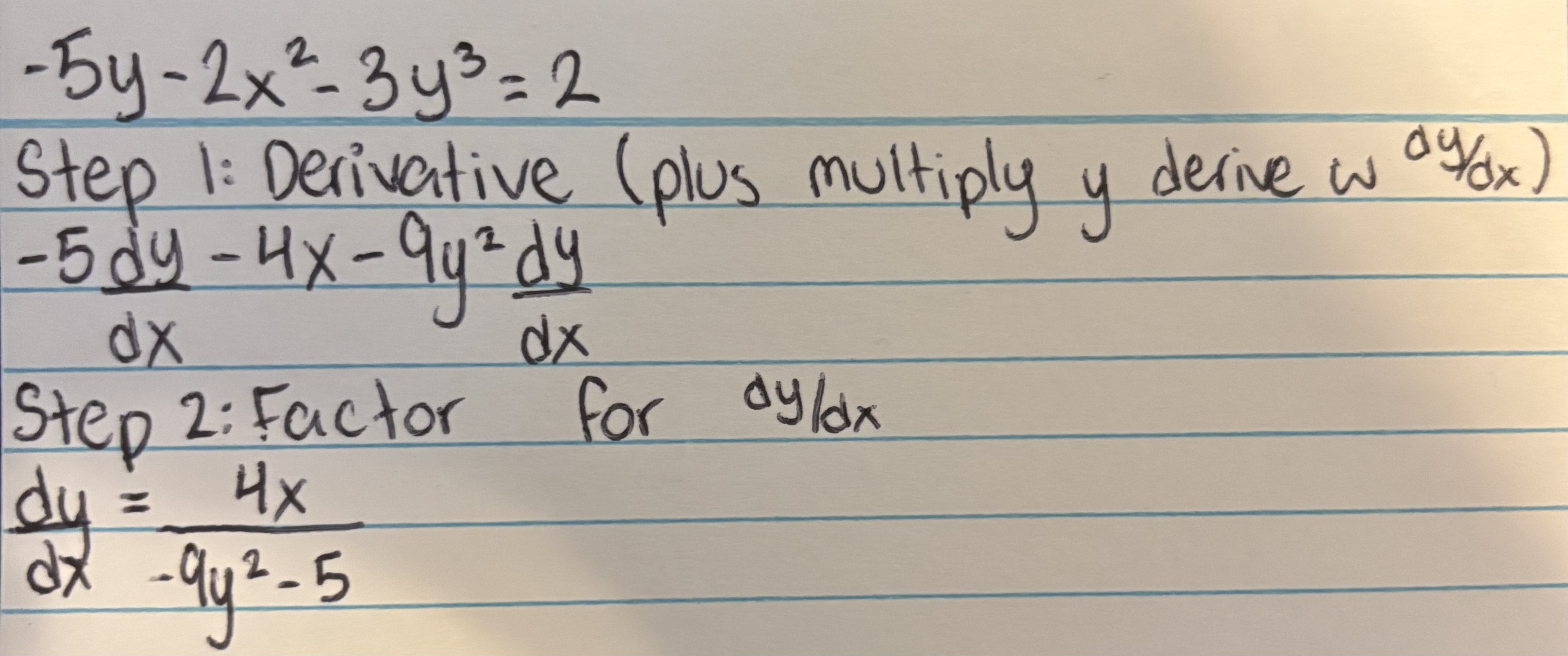
Implicit Derivative at a Point
Implicit differentiation the formula, plug in the point
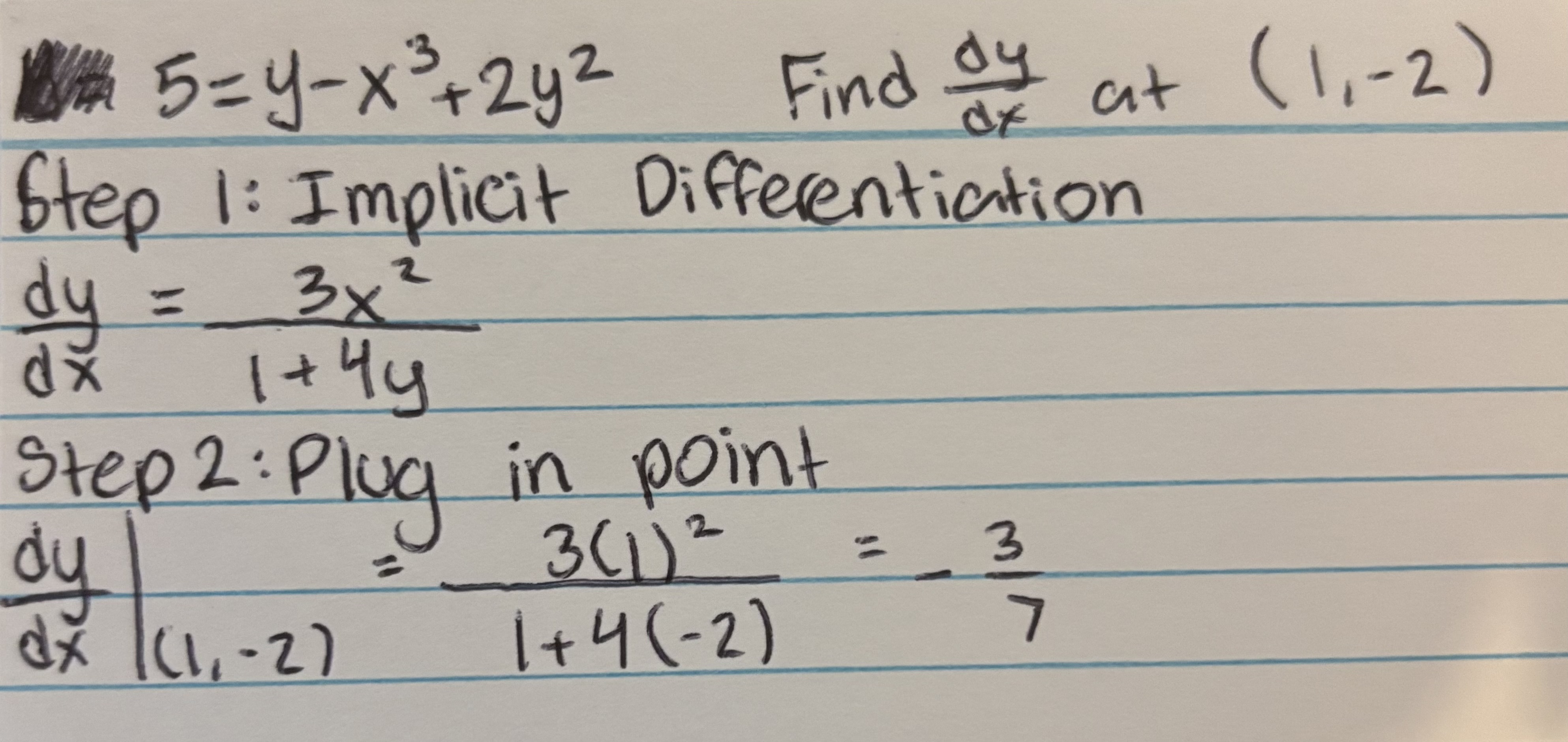
Tangent lines with Implicit Derivative from a Point
Implicit differentiation the formula, plug in the point, plug coordinates and point(slope) into y-y1=m(x-x1)

Derivative Notation (Given external formula)
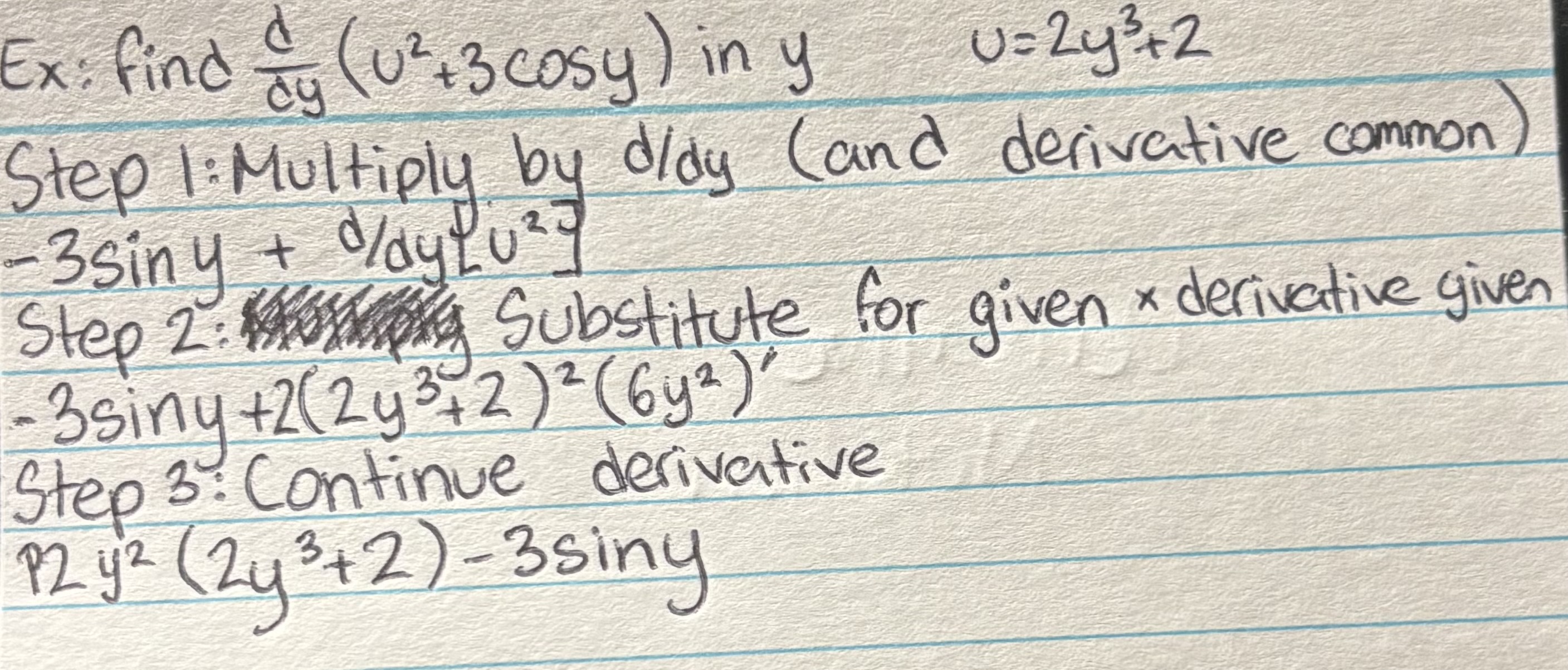
Implicit Differentiation with trig

Implicit Derivative to find tangent line (when given x=#)
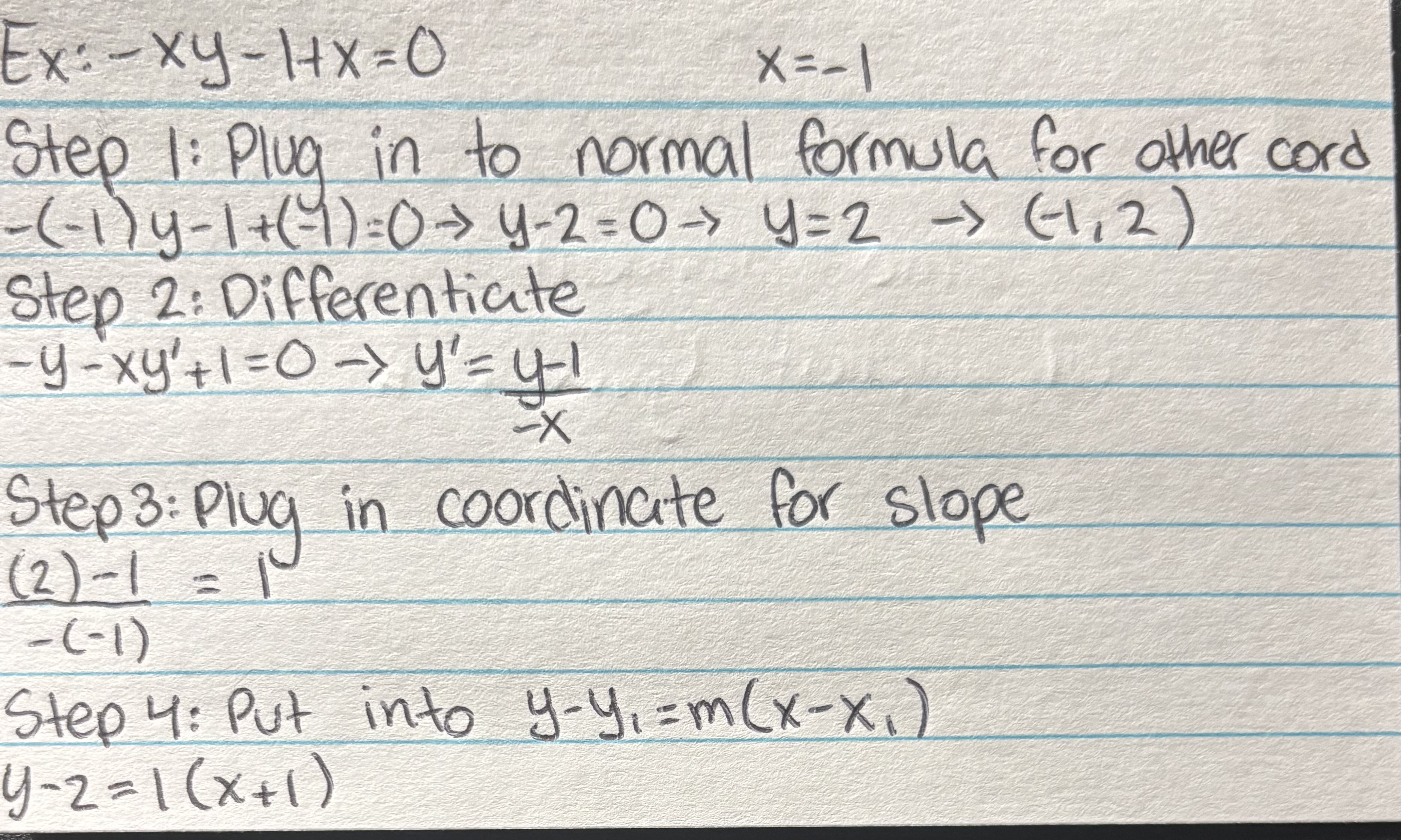
Second Derivative (with point)

L’Hopital’s Rule
Find the Limit of the top and bottom separately
Put it together, IF it equals an actual number, apply rule
Find limit of derivative
Plug in the limit
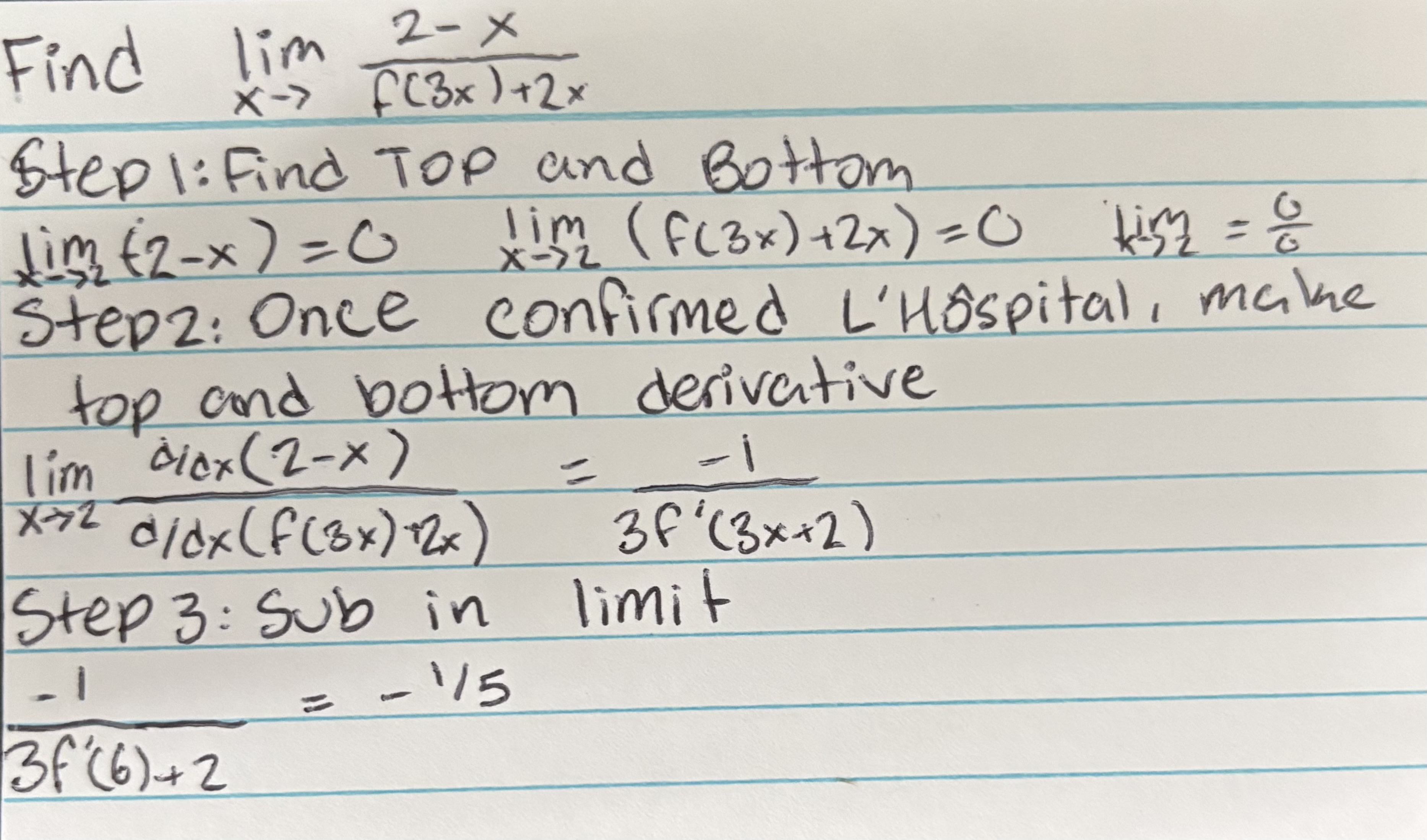
Finding differentiability in a system of equations
Make all sections of the limit equal each other, putting all variables onto one side
Find derivative of each limit section, make equal to each other, and put all variables to one side
Put f(x)-f′(x), solving for one variable at a time
